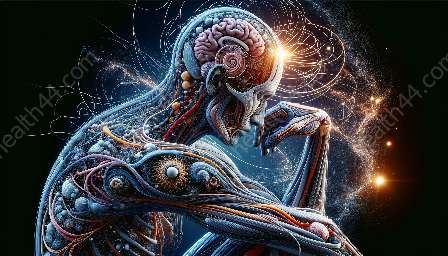Our immune system plays a vital role in protecting our bodies from harmful pathogens and diseases. Understanding the anatomy of the immune system is crucial for maintaining good health and preventing illnesses. In this comprehensive guide, we'll delve into the intricate details of immune anatomy, exploring the various components and functions of this remarkable defense mechanism.
The Immune System: A Complex Network
The immune system is a complex network of cells, tissues, and organs that work together to defend the body against harmful invaders, such as bacteria, viruses, and cancer cells. It is comprised of two main branches: the innate immune system and the adaptive immune system.
The Innate Immune System
The innate immune system serves as the body's first line of defense against pathogens. It includes physical barriers, such as the skin and mucous membranes, as well as a variety of immune cells, such as macrophages, neutrophils, and natural killer cells. These cells act quickly to identify and eliminate foreign invaders, providing rapid, nonspecific protection.
The Adaptive Immune System
The adaptive immune system, also known as the acquired immune system, is a more sophisticated defense mechanism that targets specific pathogens. This system relies on lymphocytes, namely T cells and B cells, which are capable of recognizing and memorizing specific antigens. Upon encountering a pathogen, these lymphocytes initiate a targeted immune response, generating memory cells for long-term immunity.
Key Components of Immune Anatomy
Now, let's take a closer look at the key components of immune anatomy:
Lymphoid Organs
The immune system is closely linked with several primary and secondary lymphoid organs, where immune cells are produced, matured, and activated. These organs include the bone marrow, thymus, spleen, lymph nodes, and tonsils, all of which contribute to the surveillance and elimination of pathogens.
Antibodies and Antigens
Antibodies are crucial components of the immune system, serving as specialized proteins that recognize and neutralize specific antigens. Antigens, on the other hand, are foreign substances capable of eliciting an immune response. When an antigen enters the body, antibodies bind to it, marking it for destruction by other immune cells.
Cytokines and Chemokines
Cytokines and chemokines are signaling molecules that help regulate immune responses. Cytokines are involved in cell communication and coordination, while chemokines guide the movement of immune cells to sites of infection or inflammation, facilitating an effective immune response.
Functions of the Immune System
The immune system performs a wide array of essential functions to protect the body from harm. These functions include:
- Identifying and eliminating pathogens
- Recognizing and destroying abnormal or infected cells
- Producing antibodies to neutralize harmful substances
- Maintaining immune memory for rapid responses to recurring pathogens
Immune Anatomy and Health Education
Understanding immune anatomy is crucial for health education and medical training. By gaining insight into the intricacies of the immune system, healthcare professionals can better diagnose, treat, and prevent diseases. Moreover, educating the public about immune anatomy empowers individuals to make informed decisions about their health and well-being, fostering a proactive approach to disease prevention.
Conclusion
The immune system is a marvel of biological defense, consisting of a highly coordinated network of cells, tissues, and organs. Its intricate anatomy underscores its remarkable capacity to safeguard the body from harm. By unraveling the complexities of immune anatomy, we gain a deeper appreciation for the resilience and adaptability of the human body in the face of microbial threats.


